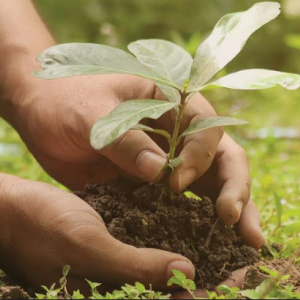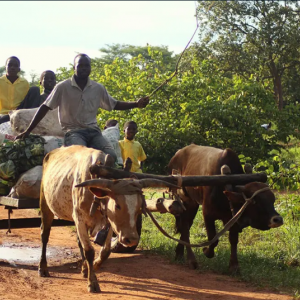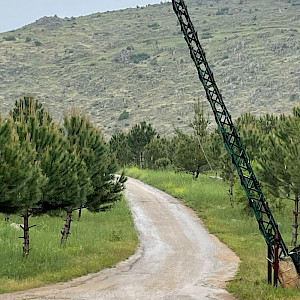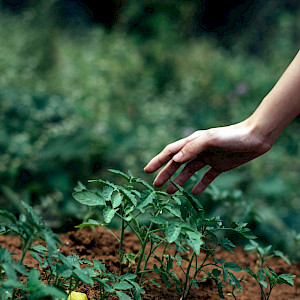The International Energy Agency and the Intergovernmental Panel on Climate Change see ‘biological energy’ or ‘bioenergy’ — that is, energy derived from plants and other organic material — as a central part of achieving Net Zero Growth and the fulfilment of the Paris Agreement.
Indonesia, with 279 million people and growing at an average 1% a year, is the world’s fourth largest country by population. Indonesia’s energy demand is, consequently, also growing and the Government aims to provide energy to the entire population spread across many thousands of islands through its National Energy Policy (Kebijakan Energi Nasional). Bioenergy is an important part of this policy.
Many people are concerned, however, that growing bioenergy plants will eat up land that could be used for producing food, a concern that is particularly relevant at the time of writing given the rapidly developing global food crisis.
To address these issues, a new book sets out ways to optimize the production of bioenergy on degraded land in the tropics, focusing on the case of Indonesia, ensuring that food security is not compromised and restoration of the vast areas of degraded land is financially viable.
‘Indonesia has an estimated 14 million hectares of degraded land that provide little benefit for people, owing to its reduced provision of goods and services, or for the climate owing to its diminished capacity to absorb carbon,’ said Robert Nasi, managing director of the Center for International Forestry Research and World Agroforestry (CIFOR-ICRAF), publisher of the book. ‘Following the Paris Agreement in 2015, Indonesia committed to new and renewable energy making up 23 percent of its national energy mix by 2025. Bioenergy has an important role to play in this. Restoration of degraded and underused land using biofuel-producing species in climate-smart agroforestry systems can create vast bioenergy potential without causing competition for land required for food or nature.’
The book presents evidence from researchers who acknowledge the scarcity of land and the need for production of biofuel to not compete with agriculture nor expand into forested areas. Growing biomass for energy in agroforestry systems on degraded and underused land enhances soil fertility; improves production, incomes and biodiversity on farms; and supports mitigation of, and adaptation to, the climate crisis and realization of the Sustainable Development Goals.
‘We showcase insights and key findings relevant to Indonesia for the restoration of degraded land using bioenergy crops that help meet local, national and international objectives,’ said Himlal Baral, lead editor of the book and senior landscape restoration scientist with CIFOR-ICRAF. ‘We expect the book will be helpful for farmers, community groups, small-to-medium-sized enterprises and policymakers when deciding where, what and how to produce bioenergy not only in Indonesia but throughout the tropics.’
Restoring those 14 million hectares of degraded land will be a costly undertaking, which has so far proved unattractive to investors at the scale necessary to achieve major impact, something that Baral and co-authors hope that the book will help remedy. They emphasize that while production of bioenergy on such lands is a promising approach, restoring landscapes with bioenergy crops is a technique that is still in its infancy and which needs a carefully thought-out approach to ensure success.
‘To optimize use of bioenergy, we need to understand its complexities,’ said Baral. ‘Growing bioenergy crops for restoration requires sound research, policies, practices, guidance and monitoring. Of foremost importance is following CIFOR-ICRAF’s maxim of identifying the “right trees for the right purpose in the right place”, which includes respecting local rights. Evidence shows that agroforestry systems that combine bioenergy-producing trees with other crops for multiple benefits for livelihoods and the environment are the most effective and efficient.’
With support from the Republic of Korea, CIFOR-ICRAF and the Centre for Forest Biotechnology and Tree Improvement of Indonesia’s Ministry of Environment and Forestry and partners — including Mulawarman University’s Tropical Rainforest Reforestation Centre, Muhammadiyah University Palangkaraya and Sriwijaya University’s Centre of Excellence on Peatland Research —have been studying the potential of bioenergy crops for restoration at selected sites through the archipelago, including on carbon-rich, degraded peatland.
According to the Ministry of Environment and Forestry, there are 2 million hectares of degraded peatlands that play a vital role in climate mitigation thanks to their vast stores of carbon.
‘With such huge areas of globally important lands, the need for restoration is inevitable,’ said Nasi of CIFOR-ICRAF. ‘With the publication of this book, it is also looking increasingly likely to be financially viable.’
The book’s chapters showcase findings from the authors’ numerous studies, which include an overview of Government policies and initiatives in recent decades; spatial assessments of degraded land available for bioenergy production; landowners’ perceptions of bioenergy crops and landscape restoration; and specific information on promising species, such as ‘nyamplung’ (Calophyllum inophyllum), ‘malapari’ (Pongamia pinnata or Milettia pinnata) and bamboo.
Read the book
Baral H, Leksono B, Seol M. 2022. Bioenergy for landscape restoration and livelihoods: re-creating energy-smart ecosystems on degraded landscapes. Bogor, Indonesia: Center for International Forestry Research.
Read more
- Infographic: Prolific pongamia: potential to restore equilibrium between people and planet
- Infografik: Malapari yang produktif: berpotensi memulihkan keseimbangan antara manusia dan planet
- Traditional tamanu:healing land and body
The authors of the book thank the Government of Indonesia’s Ministry of Environment and Forestry, National Research and Innovation Agency, Environment and Forestry Instruments Standardization Agency, and the Peatland and Mangrove Restoration Agency as well as the provincial governments of Central Kalimantan, East Kalimantan, South Sumatra and East Java, and research bodies with Muhammadiyah University of Palangka Raya, Mulawarman University, University of Palangka Raya, Sriwijaya University, Udayana University and the Yogyakarta Institute of Agriculture (INSTIPER). They also thank the Global Green Growth Institute Indonesia and Clean Power Indonesia.
The research presented in the book was part of the CGIAR Research Program on Forests, Trees and Agroforestry. The Program and the National Institute of Forest Science, Republic of Korea funding the research and the preparation of the book.









